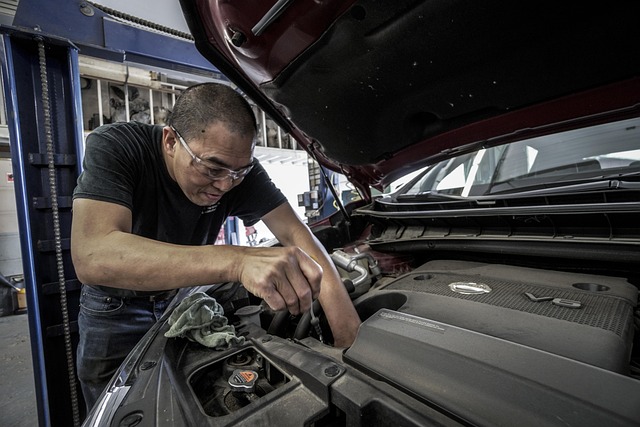Fuel-Saving Tips for Car Owners

For many young Filipinos, especially those working in the city, owning a car is more than just a means of transportation—it’s a milestone of success and independence. It’s the reward for years of hard work, the symbol of moving up in life, and the convenience of finally saying goodbye to crowded jeepneys, long bus rides, or waiting endlessly for a Grab driver to accept your booking.
But here’s the reality: while owning a car feels like a dream come true, the real challenge starts once you’re behind the wheel every day—and that challenge is the rising cost of gasoline in the Philippines.
A Story Most Pinoys Can Relate To
I once had a friend, let’s call him Jay. Jay worked in BGC and commuted daily from Cavite. He dreamed of owning a car, so he disciplined himself financially. He skipped night-outs, stopped ordering milk tea, and saved every peso he could for two years. Finally, his loan was approved, and he proudly drove home his first car.
At first, everything felt perfect. His monthly amortization was manageable, and he loved the freedom of driving to work. But after just a few months, Jay noticed his savings were shrinking fast. The culprit? Gasoline expenses. With traffic in EDSA and SLEX draining his tank, Jay found himself spending more than ₱6,000 a month on fuel alone—sometimes even higher than his car loan installment!
The dream didn’t fade, but it came with a heavy cost. Like many new car owners, Jay learned the hard way that owning a car is not just about affording the monthly payments—it’s about sustaining the hidden costs too.
If you’re planning to buy a car—or already own one—take note: gas, maintenance, and repairs can eat up a large portion of your income. The good news? With the right habits, you can make your fuel last longer and your wallet breathe easier.
Here are 12 practical fuel-saving tips for Pinoy drivers, expanded with context and real-life applications:

1. Warm Up Your Engine Efficiently
Some drivers still believe you need to idle for 5–10 minutes every morning before driving. Not true anymore. Modern engines are designed to be efficient within 45–60 seconds. Anything beyond that just wastes fuel.
Pinoy tip: If you’re in a subdivision, by the time you roll out of your gate and reach the main road, your car is already warmed up.
2. Turn Off Your Engine When Idle
Stuck outside Jollibee waiting for your order? Or waiting for someone to come down from their condo? If you’ll be sitting for more than 2 minutes, switch off the engine. Idling burns gas without moving you anywhere.
Pinoy tip: This also helps in reducing air pollution—something Metro Manila badly needs.
3. Drive Smoothly
Aggressive driving—sudden acceleration and abrupt braking—wastes fuel. Smooth, steady driving is not only safer but also more economical.
Example: If you’re driving along EDSA, resist the urge to race every time the light turns green. You’ll just waste gas and end up at the next stoplight at the same time as everyone else.
4. Fuel Up at Cooler Times of the Day
This one’s a little hack. Fuel is denser at cooler temperatures, meaning you get slightly more gas per liter if you fill up in the early morning or late at night.
Pinoy tip: If your schedule allows, avoid refueling at noon when it’s hottest.
5. Maintain an Ideal Speed
Most vehicles are most fuel-efficient at around 70–80 kph. Beyond that, fuel consumption increases sharply.
Pinoy scenario: On SLEX or NLEX, staying at a steady 80 kph is safer, saves gas, and avoids getting flagged for overspeeding.
6. Keep Windows Closed at Highway Speeds
At 60 kph and above, open windows create drag, forcing your car to burn more fuel.
Pinoy tip: If you’re driving provincial roads at low speeds, it’s fine to keep windows open. But on expressways, better use the aircon.
7. Choose Smarter Routes
Waze and Google Maps are helpful, but they don’t always account for how much fuel a rough or steep road consumes. A slightly longer but smoother route may actually save you money.
Example: Avoid shortcuts in subdivisions with endless humps. Each stop-and-go burns extra fuel.
8. Stick to Regular Maintenance
A well-maintained engine burns fuel efficiently. Dirty air filters, old spark plugs, and overdue oil changes reduce mileage.
Pinoy reminder: Skipping your ₱3,000–₱5,000 maintenance check to “save money” often backfires. Later repairs cost way more.
9. Travel Light
Every unnecessary item in your trunk makes your engine work harder. Remove things you don’t need—old bags, tools, or even that box of bottled water you keep forgetting to unload.
Pro tip: Also avoid filling your tank 100% full unless you’re going on a long trip. A half-full tank is lighter and more efficient for city driving.
10. Monitor Tire Pressure
Under-inflated tires increase rolling resistance, making your car burn more gas.
Pinoy tip: Air is usually free in gas stations. Make it a habit to check your tires every two weeks.
11. Balance the Load Inside Your Car
Ever notice how jeepneys lean when overloaded on one side? Uneven weight distribution affects fuel economy.
Pinoy scenario: If you’re going on a road trip to Tagaytay, distribute passengers and luggage evenly instead of dumping everything in the trunk.
12. Try Carpooling or Commuting Occasionally
Sometimes the most practical way to save gas is not to use your car at all. Carpool with office mates, or if your destination is just one or two rides away, commute instead.
Bonus: You’ll save not just money, but also time from hunting parking slots in malls or business districts.
Beyond Fuel: A Smart Car Owner’s Mindset
Driving isn’t just about getting from point A to B—it’s also about managing your financial lifestyle. The mistake many Pinoys make is thinking the only cost of car ownership is the down payment and monthly amortization. But the truth is:
- Fuel costs can equal or even exceed your loan payments.
- Maintenance (oil changes, tires, battery replacement) comes up regularly.
- Unexpected repairs (aircon, engine, suspension) can cost tens of thousands.
This is why it’s important to be financially prepared and disciplined. Think of your car not only as a luxury or convenience but as an ongoing responsibility.
Final Thoughts
Owning a car in the Philippines is both a dream and a challenge. With rising fuel prices and heavy traffic, the costs can quickly pile up. But by following these 12 practical fuel-saving tips, you can make your car ownership journey smoother, lighter on the wallet, and more sustainable.
If you’re a first-time buyer, remember: the down payment is just the beginning. If you’re already a car owner, keep in mind that every liter of gas saved is also money saved.
At the end of the day, being a responsible driver isn’t just about following traffic rules—it’s also about managing your car wisely. A smart car owner is not just someone who knows how to drive, but someone who knows how to save.
So the next time you’re tempted to floor the accelerator or leave the engine running, think of your hard-earned money evaporating with every drop of fuel. Drive smart, save money, and enjoy the freedom of the road—without the constant stress of fuel costs.

